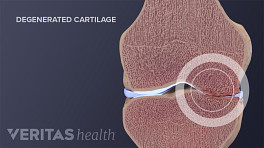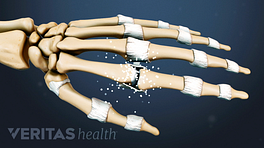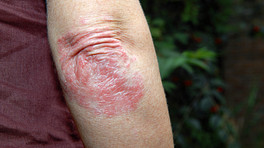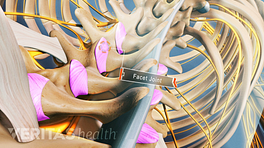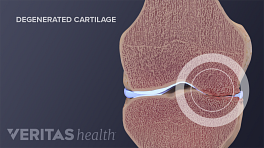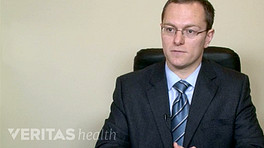The anatomical structure of all mobile joints is nearly identical. An outer joint capsule made of tough, fibrous connective tissue connects the bones and provides strength and stability.
In This Article:
- Understanding Joint Pain
- How Arthritis Causes Joint Pain
- Other Causes of Joint Pain
Joint Pain from Lack of Synovial Fluid - Rheumatoid Arthritis
The inside of the capsule is covered with a sheet of synovium, a membrane whose cells are responsible for secreting synovial fluid. Synovial fluid, along with water, acts as a lubricant that helps smooth the sliding motion between the bones.
Rheumatoid arthritis is a chronic inflammatory disease that affects the synovial lining, and leads to severe joint pain and loss of function. Rheumatoid arthritis is an autoimmune disorder characterized by errant messages that tell the immune cells to destroy the body’s own tissues. Mostly found in the hands and feet, symptoms of rheumatoid arthritis include:
- Inflammation and swelling of the synovial tissue
- Pain, stiffness, and swelling of the joint
Progression of the disease eventually results in enzymes destroying bone and cartilage, altering the alignment of the joints and leading to further pain and immobility. Systemic symptoms such as fatigue and muscle aches are also common.
Joint Pain Caused By Worn Down Cartilage - Osteoarthritis
Another large component of the joint is cartilage. Cartilage is a type of connective tissue that is structured like a sponge and has the ability to soak up and squeeze out water. The slippery tissue provides another lubricating surface while the porous, water-filled structure serves as a large shock absorber during weight bearing activities.
See doctor approved osteoarthritis symptoms and treatments information in the Osteoarthritis Health Center
Degeneration of this cartilage is the cause of osteoarthritis. As the cartilage breaks down, the joints are less cushioned and the uneven surfaces slide over each other, producing painful friction. Additionally, as the cartilage is less able to take on the stress of movement, surrounding structures such as the bones, joint capsule, ligaments, and tendons become increasingly strained.


